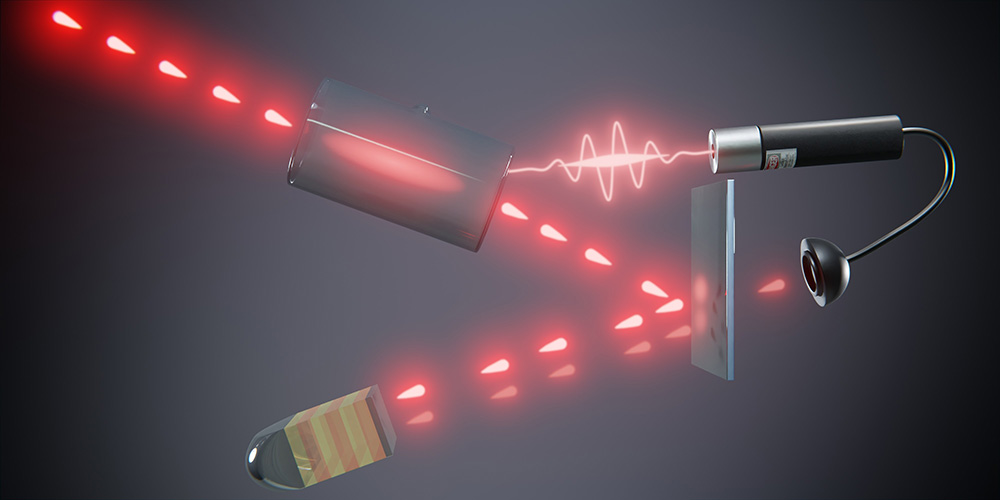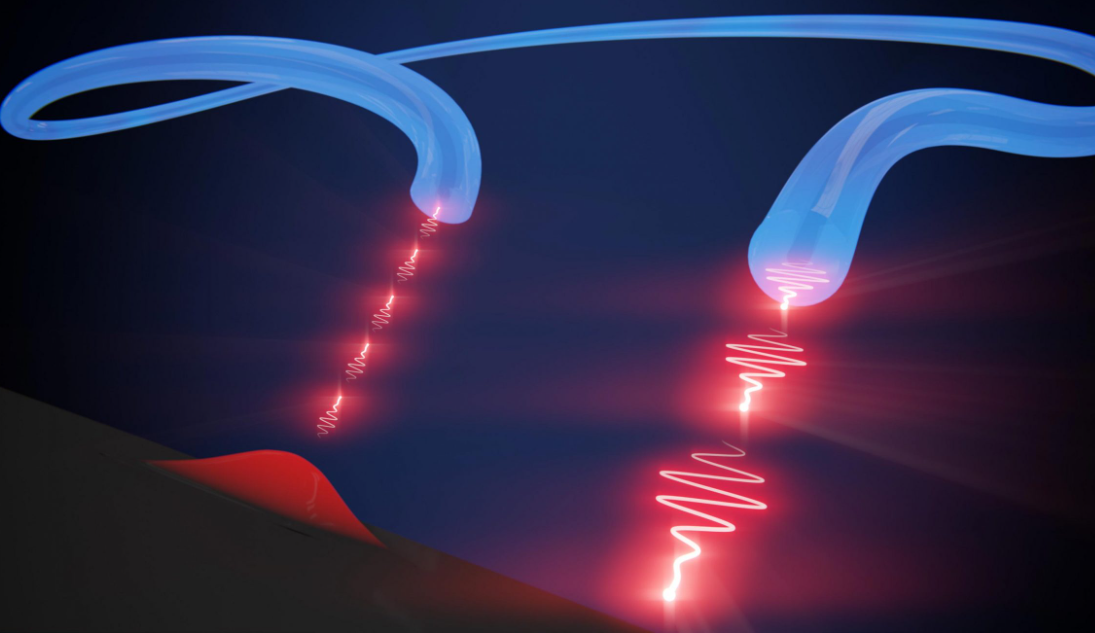创新背景
量子技术的基础由接口的单光子源和光子的量子存储器共同构成,实现异构、最先进的设备之间的兼容性是量子技术一项长期存在的挑战。量子通信网络由众多分离的节点组成,采用量子通信系统,节点存储量子信息。
创新过程
量子通信网络的信息由单个光子传输。单个光子在量子网络节点上需要缓冲元件,可以暂时存储后重新发射光子种包含的信息。以往研究一直在探索蒸汽细胞中的暖原子对量子记忆的适用性,通过经典光线使用衰减激光束。经典光线下一定时期内击中的蒸汽池的光子数量并不平均分布,有时是一个,有时是两个,有时是三个或者直接没有。

巴塞尔大学Philipp Treutlein教授领导研究小组,开发出一种基于玻璃电池内原子气体的量子存储器,为量子通信网络开发了一个网络节点,可以将单个光子存储在蒸汽池中,方便以后传递信息。在整个过程中,原子不要经过特殊冷却,使存储器易于生产通用甚至进行卫星应用。相关研究成果《基态蒸汽池量子存储器中的单光子存储》2022年发表在《PRX Quantum》上。
为了使用“量子光”(精确地只有一个光子)来测试量子记忆,研究人员构建并成功接口了一个预示的单个光子源,一次只发射一个光子,能够测试量子存储器的质量和存储时间。研究构建的光源在基于周期性极化磷酸钛钾中的空腔增强自发参数下转换,并可以基于电磁诱导的87Rb蒸汽透明度匹配记忆。

新量子存储器在蒸汽池中存储来自单光子源的光粒子,光子发射时探测器显示第二个光子进行预示,两个光子同时发出。探测器在适当的时候会触发控制激光脉冲,激活量子存储器启动存储过程。
之后,单个光子被引导到量子存储器中。在控制激光束的作用下,光子会使超过十亿个铷原子呈现出原子的两个可能能级的所谓叠加状态。光子自身在这个过程中会消失,但包含的信息会被转化为原子的叠加状态。控制激光器的短暂脉冲可以在一定的存储时间后读出叠加状态下的信息,并将其转换回光子。

依赖于长寿命电子基态的热原子蒸气记忆为了储存单个光子,在内存读出时会产生太多的噪声。研究人员表示,整个过程中噪声是一个关键点,它在读出过程中产生的额外光有可能损伤光子的质量。研究利用自旋极化原子的超精细结构中的极化选择规则和高带宽操作来限制降低噪声,保证在存储时间几百纳秒后单光子质量依旧很高。

新存储器中的光子比存储的单光子脉冲的持续时间长了一百倍以上,可以同步随机产生单光子,然后应用于量子信息领域。
创新关键点
将单个光子存储在蒸汽池中并传递其中的信息,使用量子光测量量子记忆,实现单个光子源存储。
创新价值
单光子源和原子存储器平台对于未来在高带宽下运行的室温量子网络具有吸引力,有助于量子信息通信网络发展。
No need to cool atoms for single photon storage
The information of a quantum communication network is transmitted by a single photon. A single photon requires a buffer element on a quantum network node that can temporarily store and re-emit the information contained in the photon species. Previous research has been exploring the applicability of warm atoms in steam cells to quantum memory, using attenuated laser beams through classical light. The number of photons hitting a steam pool under classical light over a certain period of time is not evenly distributed, sometimes one, sometimes two, sometimes three, or none at all.
Professor Philipp Treutlein of the University of Basel led a research team to develop a quantum memory based on atomic gases in glass batteries, developing a network node for quantum communication networks that can store individual photons in a steam pool for later transmission of information. Throughout the process, the atoms are not subjected to special cooling, making the memory easy to produce for general purpose or even satellite applications. The relevant research result "Single Photon Storage in Quantum Memory of Ground-State Steam Pools" was published in PRX Quantum in 2022.
To test quantum memory using "quantum light" (precisely only one photon), the researchers built and successfully interfaced with a single photon source that heralds, emitting only one photon at a time, capable of testing the mass and storage time of quantum memory. The light source constructed to be studied is converted under the spontaneous parameters of cavity enhancement in periodic polarized potassium titanium phosphate and can match memory based on electromagnetically induced 87Rb vapor transparency.
The new quantum memory stores light particles from a single photon source in a steam pool, and when the photons are emitted, the detector displays a second photon for foreshadowing, and the two photons are emitted at the same time. The detector triggers the control laser pulse at the right time, activating the quantum memory to start the stored process.
After that, individual photons are directed into quantum memory. Under the action of controlling the laser beam, photons will cause more than a billion rubidium atoms to appear in a so-called superposition of two possible energy levels of atoms. The photons themselves disappear in the process, but the information contained is converted into a superposition of atoms. Controlling a short pulse of the laser can read out the information in the superimposed state after a certain storage time and convert it back into photons.
Thermal atomic vapor memory that relies on the ground state of long-lived electrons produces too much noise when read out in memory in order to store individual photons. The researchers say that the noise throughout the process is a key point, and the extra light it produces during the readout process has the potential to damage the quality of the photons. The study uses the polarization selection rules and high-bandwidth operations in the ultra-fine structure of spin-polarized atoms to limit and reduce noise, ensuring that the single photon quality remains high after a storage time of several hundred nanoseconds.
The photons in the new memory are more than a hundred times longer than the duration of the stored single photon pulses, which can be synchronously randomly generated and then applied to the field of quantum information.
智能推荐
量子计算+凝聚态物理 | 将介电谐振器创新引入量子计算可将“相干时间”延长百倍
2022-11-02新南威尔士大学的工程师引入一种称为介电谐振器的晶体,可将量子计算处理器可保存信息的时间延长100倍以上。
涉及学科涉及领域研究方向量子计算+原子物理 | 创新利用“碱土原子”实现量子特定计算
2022-10-24加州理工学院的一个量子物理学家团队在使用一种更复杂的中性原子(位于元素周期表第二列的碱土原子)的研究上取得了进展。
涉及学科涉及领域研究方向新建“量子级热泵”可提高射频信号测量准确性
2022-09-06涉及学科涉及领域研究方向